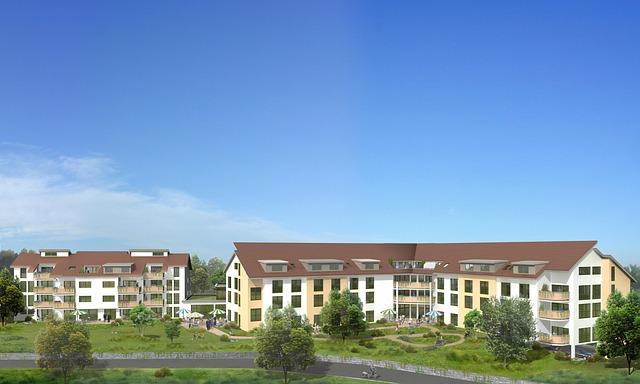Interior architectural CAD rendering is a key driver in making buildings more energy efficient and sustainable. By creating detailed digital models, architects can predict and enhance performance, reduce carbon footprints, and manage client expectations. Advanced algorithms enable scenario simulations, fostering informed decision-making on energy consumption and material usage, ultimately shaping a greener built environment.
In today’s digital age, sustainable and energy-efficient building design is paramount. This article explores crucial aspects of achieving eco-friendly spaces, focusing on understanding energy efficiency in buildings and the integral role of interior architectural CAD rendering. We delve into advanced rendering techniques that not only visualize but also enhance design strategies for a greener future. By combining cutting-edge technology with thoughtful practices, architects and designers are revolutionizing the built environment.
Understanding Energy Efficiency in Buildings
Energy efficiency in buildings is a key aspect of sustainable design, focusing on minimizing energy consumption while maximizing comfort and functionality. This involves understanding how various building components interact with their environment, from insulation and window placement to lighting and heating systems. By leveraging interior architectural CAD rendering, designers can virtually model these elements to predict and optimize energy performance before construction begins.
Through rendering, architects can simulate different scenarios, testing the impact of design choices on energy usage. This not only helps in identifying areas for improvement but also enables informed decision-making about material selection, orientation, and overall layout. By embracing such technologies, the industry moves towards more sustainable practices, contributing to reduced carbon footprints and energy costs over the lifespan of a building.
The Role of Interior Architectural CAD Rendering
Interior architectural CAD rendering plays a pivotal role in shaping sustainable and energy-efficient building designs. By creating detailed, realistic visualizations, architects and designers can effectively communicate their visions to stakeholders and clients. This process allows for early identification of potential issues, enabling adjustments before construction begins. With the ability to model various design options, interior architectural CAD rendering facilitates informed decision-making, ensuring that the final product not only meets but exceeds energy efficiency standards.
Moreover, these renderings serve as powerful tools for marketing and project management. They help secure funding by showcasing the aesthetics and benefits of proposed designs, while also aiding in client expectations management. In today’s digital era, interior architectural CAD rendering has become an indispensable method to balance environmental sustainability with visually appealing and functional spaces, ultimately contributing to a greener built environment.
Sustainable Design Practices and Their Impact
Sustainable design practices are transforming the building industry, with energy efficiency at their core. By integrating natural materials, optimizing daylighting and ventilation, and adopting green construction methods, architects and designers create buildings that minimize their environmental footprint. These strategies not only reduce operational costs for occupants but also contribute to a healthier indoor environment.
Interior architectural CAD rendering plays a pivotal role in this process by enabling professionals to visualize and communicate these sustainable design concepts before construction begins. Accurate renderings help stakeholders understand the proposed aesthetics, functionality, and sustainability features, fostering buy-in and ensuring projects align with their vision for eco-friendly buildings.
Advanced Rendering Techniques for Eco-Friendly Spaces
In the pursuit of sustainable and energy-efficient building designs, advanced rendering techniques play a pivotal role in visualizing and realizing eco-friendly spaces. Interior architectural CAD rendering has evolved to become an indispensable tool for architects and designers, enabling them to create detailed digital representations of proposed structures. This technology goes beyond mere aesthetics; it integrates environmental considerations into the design process by accurately depicting how natural light, ventilation, and insulation will interact with the built environment.
Through sophisticated algorithms and rendering engines, CAD software can simulate various scenarios, helping stakeholders make informed decisions. For instance, designers can assess energy consumption patterns, optimize material usage, and predict the overall environmental impact of a structure before construction begins. By leveraging these advanced rendering techniques, the architecture and construction industries are increasingly able to contribute to a greener future, ensuring that buildings not only meet but exceed sustainability standards.
Rendering plays a pivotal role in achieving sustainable and energy-efficient building designs. By leveraging advanced techniques like interior architectural CAD rendering, designers can create visually stunning spaces that prioritize environmental responsibility. These methods not only aid in visualizing concepts but also inform decision-making, ensuring structures are optimized for energy performance and minimize their ecological footprint. Adopted early in the design process, sustainable practices can lead to significant cost savings and contribute to a greener future.
